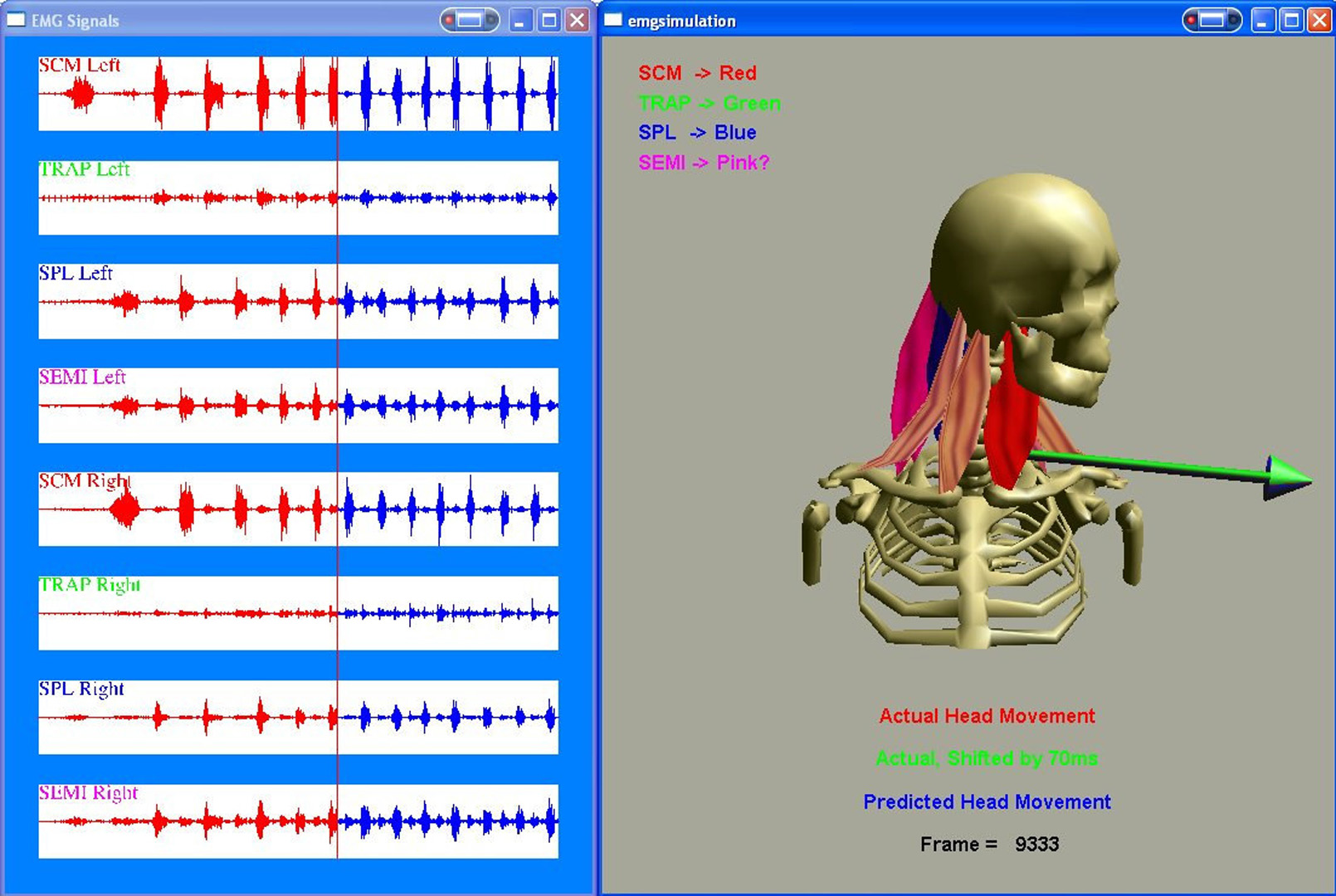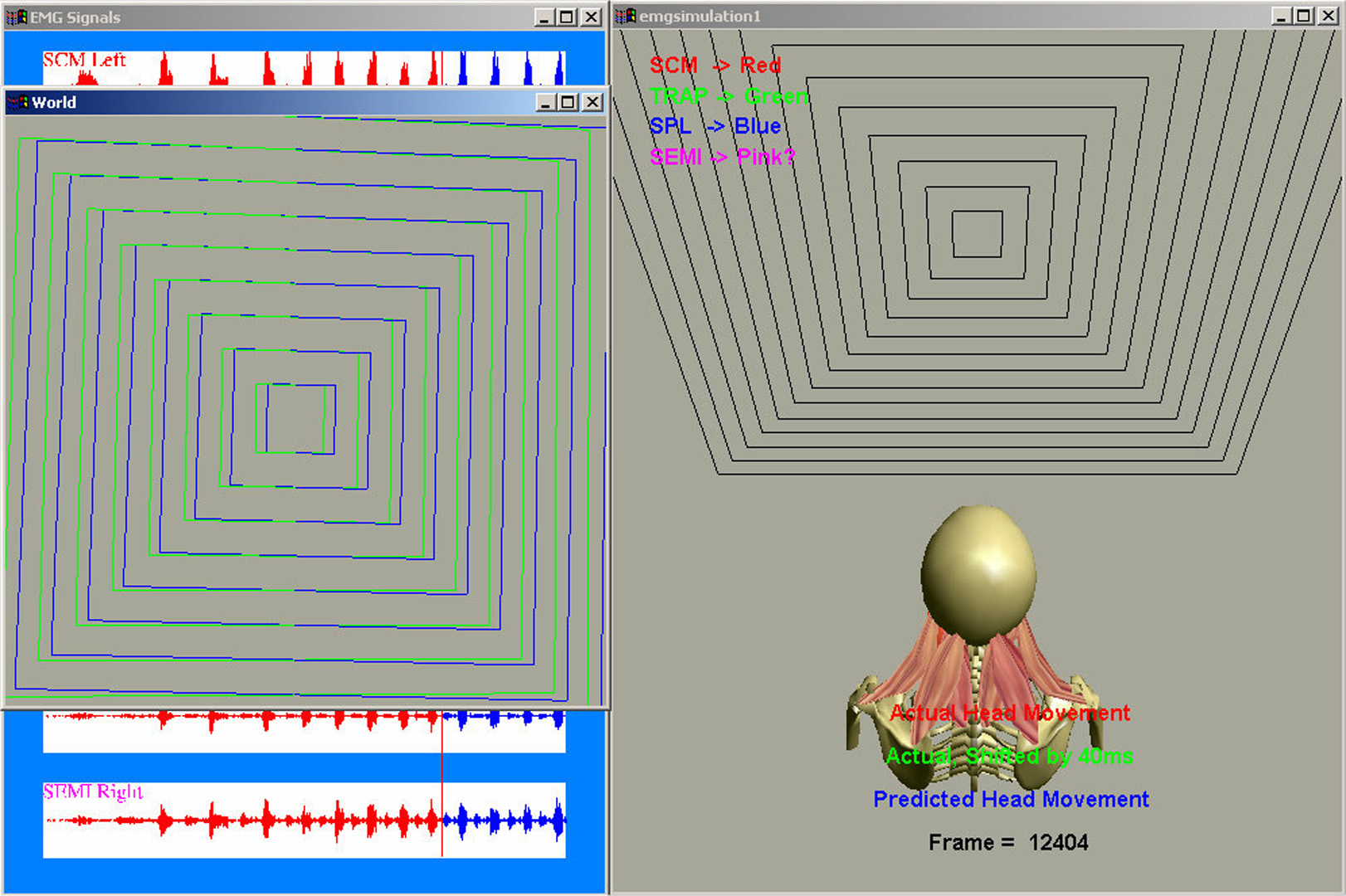“A Multi-dimensional Visualization Tool for Understanding the Role of EMG Signals in Head Movement Anticipation” by Hasanbelliu
Conference:
Type(s):
Entry Number: 109
Title:
- A Multi-dimensional Visualization Tool for Understanding the Role of EMG Signals in Head Movement Anticipation
Presenter(s)/Author(s):
Abstract:
One of the main problems Virtual Environment (VE) applications face is the perceptible time latency users experience as the graphics engine updates the scene. This latency causes undesirable effects on users such as lack of accuracy, cyber sickness, and an overall degraded performance. Ongoing research in our laboratory deals with minimizing the lag produced by head tracking devices [Barniv et al. 2004], [Hasanbelliu et al. 2004]. Based on previous research, we know that muscle contraction is preceded by muscle activation. We use Electromyography (EMG) signals from neck muscles in conjunction with angular velocity to anticipate head motion, consequently reducing this time latency. Our system is capable of anticipating significantly well up to 70 ms compared to the 20 ms request set by NASA.
In our research, we need to understand the activity of neck muscles, their role in controlling head motion, and more specifically the role that EMG signals play in head movement anticipation. For these reasons, we simultaneously gathered ground truth data from a rate-gyro head tracker in order to determine head motion and EMG signals from four pairs of muscles around the neck (identified experimentally) to measure muscle activity. The amount of data we are dealing with is quite voluminous; three gyro and eight EMG channels with over one hundred twenty thousand data points each per experiment. Our efforts require an understanding of the temporal characteristics of the EMG signals. Simultaneously, we want to visualize each muscle’s role in head motion; more specifically, how it acts with or against other muscles. Furthermore, we need to be able to visualize the anticipation results of our system as well as compare its performance against other existing prediction mechanisms. Therefore, to better understand the large amount of disparate data we are dealing with, it was necessary to develop a powerful visualization tool.
References:
1. Barniv, Y., Aguilar, M., and Hasanbelliu, E. 2004. Using EMG to Anticipate Head Motion for Virtual Environment Applications. IEEE Transactions on Biomedical Engineering.
2. Hasanbelliu, E., Barniv, Y., and Aguilar, M. 2004. Using EMG Signals to Anticipate Head Motion via Recurrent Neural Networks. International Conference on Imaging, Systems, and Technology
Acknowledgements:
Funding for this work was provided by the Airspace Operations Systems project of NASA’s Airspace Systems Program.





